Temples
Mahalaxmi TempleJotiba Temple
Khidrapur Temple
Bahubali Temple
Narsobawadi Temple
Mueseums
New Palace MueseumSiddhagiri Mueseum
Townhall Mueseum
Chandrakant Mandare
Hill Stations
PanhalaAmba
Amboli
Shree Mahalaxmi Temple Kolhapur
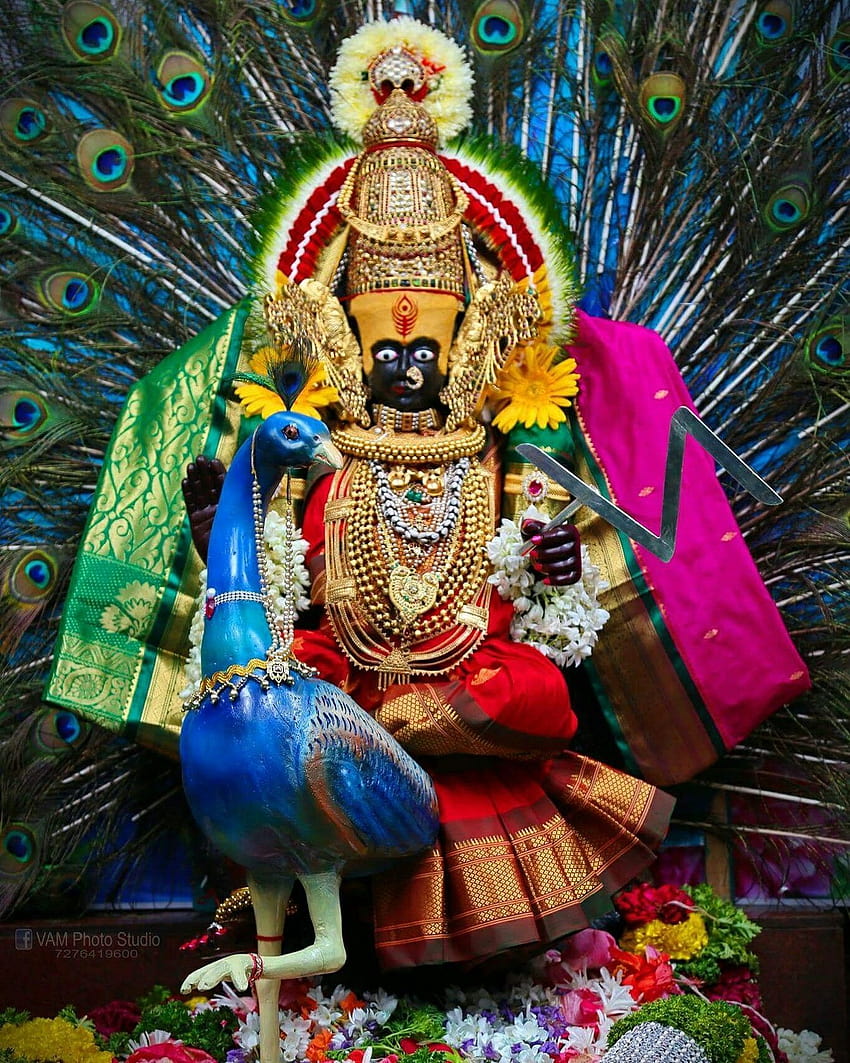
The Shri Mahalakshmi Temple of Kolhapur in Maharashtra, India, is one of the Shakti Peethas also called Dakshin Kashi, listed in various puranas of Hinduism. According to these writings, a shakti peetha is a place associated with Shakti, the goddess of power. The Kolhapur peetha is of special religious significance, being one of the six places where it is believed one can either obtain salvation from desires or have them fulfilled. The temple takes its name from Mahalakshmi, the consort of Vishnu, and it is believed that the divine couple reside in the area. The temple belongs, architecturally, to the Kannada Chalukya empire, and may have been first built circa 700 AD. Mounted on a stone platform, the image of the four armed and crowned goddess is made of gemstone and weighs about 40 kilograms. The image of Mahalakshmi carved in black stone is 3 feet in height. The Shri yantra is carved on one of the walls in the temple.A stone lion, the vahana of the goddess, stands behind the statue. The crown contains an image of the Sheshnag —
the serpent of Vishnu. In Her four hands, the deity of Mahalakshmi holds objects of symbolic value. The lower right hand holds a mhalunga (a citrus fruit), in the upper right, a large mace (kaumodaki) with its head touching the ground, in the upper left a shield (khetaka), and in the lower left, a bowl (panpatra). Unlike most Hindu sacred images, which face north or east, the image of this deity looks west (Pashchim). There is a small open window on the western wall, through which the light of the setting sun falls on the face of the image for three days around the 21st of each March and September.
Shree Jotiba Temple Kolhapur

Jyotiba is a holy place of Hinduism near Wadi Ratnagiri, Maharashtra, India. The deity of the temple is known by the same name, and is held by the locals to be an incarnation of three gods: Brahma, Vishnu, Mahesha, and Jamadagni[1]. An annual fair takes place on the full moon night of the Hindu months of Chaitra and Vaishakha. Jyotiba temple is an important Hindu religious destination located at an altitude of 3124 feet above sea level in the Panhala range of Maharashstra. It is believed that the main deity the Jyotiba is formed from the souls of three Primary Gods, Brahma, Vishnu
and Shiva. Legendery stories tell that Jyotiba is formed to kill the demon Ratnasur.
Khidrapur Temple
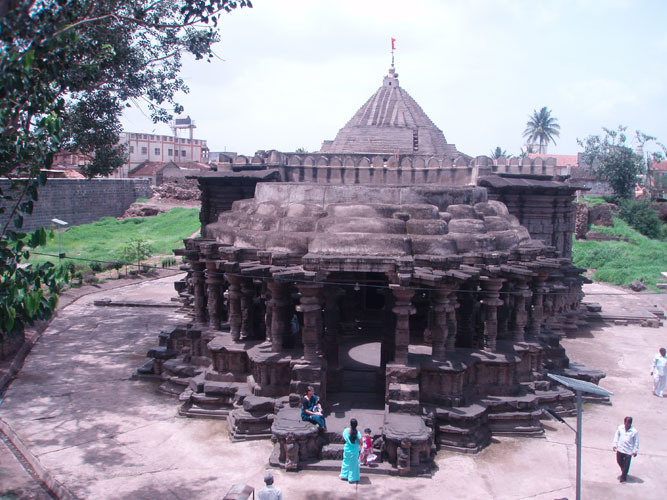
The Kopeshwar, Ancient & artistic temple situated on the bank of Krishna is a fine example of ancient sculpture. It was built in 11-12 century by Shilahar. In the interior you see first Vishnu( Dhopeshwar) and Shivling facing north. But there is no nandi who has separate Mandir. Separate Actor-Pendal, hall, old pillars, carvings of gods & male-female artists in various poses are attractive. The ceiling is semi-circular with matchless engravings. On the outside complete 'Shivaleetamrit' is carved When sati Parvati jumped into Daxa's sacrifice, Lord Shiva was angry. He got peace of mind in this temple. From entrance to Shivaling, we feel peace, coldness and dark.
In Shravan, on Monday & Shivratri the mandir is crowded. The palanquin celebration is simply spectacular!
Bahubali & Jahaj Mandir
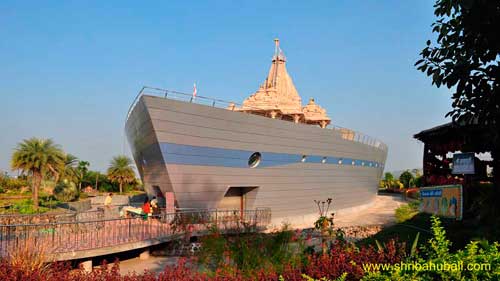
Shri Bahubali Bramhcharya and Vidyapeeth located at Kumbhoj Bahubaliin Maharashtra is a Jain pilgrimage centre. It is an Atishaya Kshetra i.e. place of miracles. The temple is dedicated to Lord Bahubali. According to history Kumbhoj is an ancient city. An ascetic saint Shri Bahubali Maharaj lived here almost 250 years ago. He was a renowned scholar of the science of spells. It was because of his presence that no wild animals caused any harm to the pilgrims visiting the holy place.
The name of the place has been kept has Khambhoj Bahubali in memory of the great saint. After the death of the saint many other notable people visited the place. In 1851 A.D. Muni Shri Prabhachandraji visited the kshetra. Later in 1958 Muni Shri Kamlakarji came to this holy place. In the 20th century another great saint Acharya, Shri 108 Shanti Sagarji came here. Thus this place became a holy place by the foot prints of these great sages. In 1937 Chaturmas Vaktavya i.e. the Four Monthly Statement was delivered from here. As per history it is said that the first holy pilgrimage to the sacred place Shri Sammed Shikharji also began from here.
Narsobawai Temple
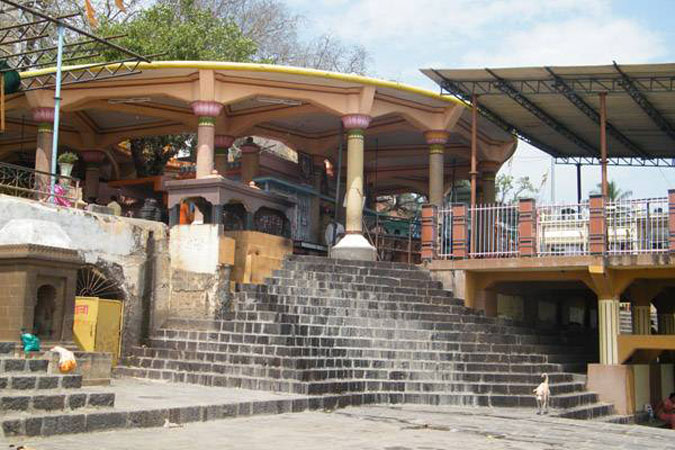
Nrusinhawadi Pilgrimage Place Kolhapur Nrusinhawadi is famous pilgrimage place in Kolhapur district. Nrusinhawadi is a capital of Datta devotees. This religious place is situated on the sacred confluence of Krishna and Panchganga rivers at distance of 45Km from Kolhapur. The Nrusinhawadi area is spread for about one square mile in the centre of two rivers Krishna and Panchaganga. The population of town is about 4000. On the Ghat of Krishna River and below large Audumber trees there is a beautiful and attractive temple. The Paduka established by Swami are there
in that temple. Present temple was constructed by muslim king Adilshah of Vijapur. The daughter of this Vijapur king had lost her eyes. As asked Bidar Badashah , he came to Nrusinhawadi. He worshipped Shri Guru, decided Navas. The sacred ash given by worshipper when applied to eyes of daughter she regained sight. King became glad.Records indicate that he gave two villages Ourwad and Gourwad on the other side of Krishna river Inam , ownership for enabling worship activities of the temple As today's temple was constructed by Muslim King it does not have a spire. It is an elongated high building and in front there is large Ghat of Krishna-river and the river is flowing slowly.
Newpalace Mueseum
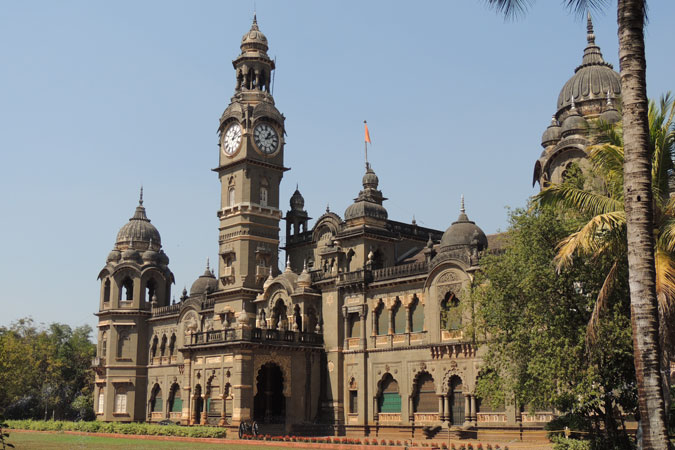
This is an ancient building on the Bahvani Mandap-Kasaba Bavda Road. It was constructed during 1877-1884. Being an excelent specimen of architecture build in black, polished stone, it has been an attraction for the tourists. It has extensive premises with a beautiful garden, fountain and wresling ground.The whole building is eight-angled and has a tower in the middle. The clock on it fixed in 1877. At separate distance there are small towers. On every glass are painted the events in Shivaji's life. There is zoo and a ground lake. Even today, it is the residence of Shreemant Shahu Maharaj.
The ground floor New Palace accommodates the Shahaji Chhatrapati Museum, given over to memorabilia of the Kolhapur rulers.Several tourists from across the country visit the New Palace each year. This musium exibites royal way of existence. It is open on all days save Monday, from 9.30 AM to 6.00 PM, if you're a lover of historical sites, this one is a must visit!
Siddhagiri Gramjivan Museum (Kanerimath)
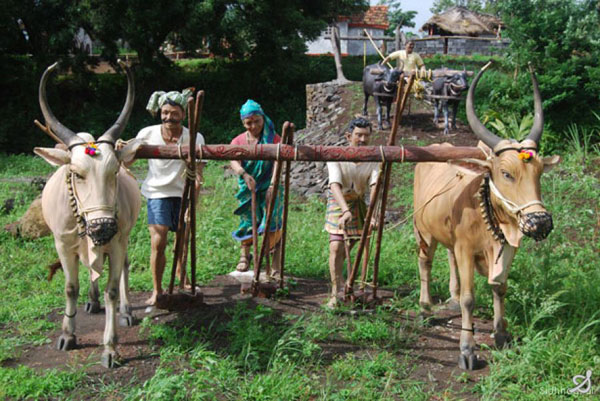
Siddhagiri believes that, “Everyone has the moral right to avail good lifestyle”. With this vision in mind, emphasis is given on toxin free yield, providing guidance & support to farmers. Lakhpati sheti and Siddhagiri Naturals are being the role models to be adopted. One of the Krishi Vidgyan Kendra (KVK) has also been established in the math province. Math is also actively promoting the importance of organic farming and desi cows. Desi cows have also been given equal importance, as if to have a good doctor for a family. and their students excel. Siddhagiri Gurukulam is a perfect assimilation
of our traditional ways of learning (Guru-Shishya parampara) and modern education system. Gurukulam is a place where learning is Happiness centric (Ananda Kendrit) and not money centric. To connect to our Cultural roots, Siddhagiri Museum has brought our indigenous ways of living to reality. It perfectly depicts how villagers were interdependent, but were independent collectively (a self-sufficient village).
TownHall Kolhapur

Museum of Kolhapur's Historical paintings and events.Historical ruminants from bramhapuri, old paintings, coins, sculpture remains along with weaponry are displayed here. The best feature of interest in the city is the Town Hall Kolhpur Museum (Monday closed) on Bhausingji Road, 1km north of the Temple. This sombre Neo-gothic structure was built as the Town Hall in 1872-76 by Charles Mant. This is his first creation in Kolhapur, the only building in pure Neo-gothic style.
The frontel porch of the Museum is flanked by towers with steeply pyramidal metal roofs. Two European cannons are on display here; the example dated 1609 is engraved with a relief of the god Mars.
Chandrakant Mandhare Art Gallery
Karveernagari is famous as city of art. Two famous Mandare brothers viz. Chandrakant and Suryakant. They had left their own footprints in this domain. Mr. Chandrakant Mandare is known for his portraits showing his love towards nature. This art gallery is established at the residence of Chandrakant Mandare in the 7th lane of rajarampuri. The pictures painted by gifted skill of famous actor Chandrakant Mandare give pleasure to art lovers, viewers.About 15-20 lakh rupees were spent for this beautiful museum of portraits and antique items. Despite spending all this money from his own pocket, Mr. Chandrakant Mandare handed over this precious museum to archaeological department of government and has established new standard of the thoughts of Rajas Shahu Maharaj. This has been a major attraction for tourists.
Panhala Fort
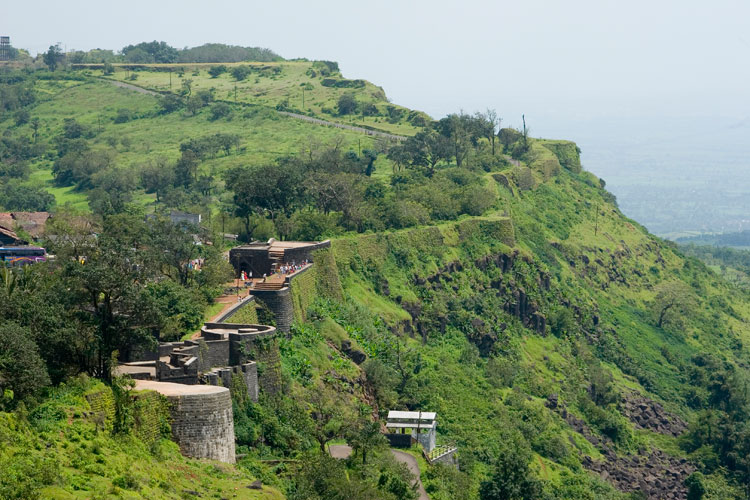
Panhala lies on the Sahyadri Mountain Range and is situated in the Kolhapur district of Maharashtra. It is about 22 km to the northwest of Kolhapur on the Kolhapur-Ratnagiri road and is at an altitude of 3177 feet above sea level. The Ambarkhana was built by the Marathas and it houses the palace, the administrative division and the granary. The granaries were necessary since grain needed to be stored in case of famines and other calamities. You can also take a look at the Teen Darwaja, which are three gates that provide access to the fort. Sajja Kothi, which was built by the
Mohammedans in 1008 AD. There is a very interesting story related to this fort. Many say that when Siddi Johar, who was a Bijapur general, attacked the fort, Shivaji escaped from the window while Shiva Kashid, in the disguise of Shivaji fought bravely with Siddi Johar. There is also the Someshwar tank and Andhar Bav. Do not forget to visit the Nayakini Sajja, at Panhala, It is a great thing to see, to understand the warfare strategy used by the Marathas to deceive their foes. It was located next to one of the corners of the fort to hide the ravine or moat. When the enemies tried to climb over the particular corner, they would fall into the ravine. There are also other places in Panhala that you could visit besides all these wonderful places.
Amba Ghat
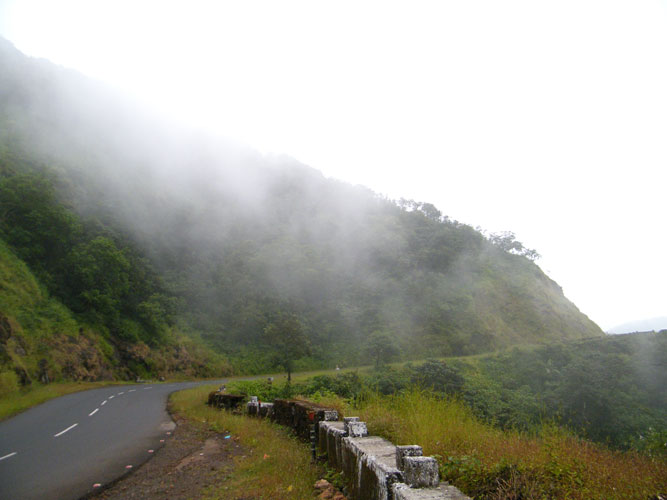
The location Amba Ghat is quite well known for its beautiful natural surrounding and pleasant cool weather. This is the reason large number of national and international tourists are visiting this tourist centre almost in every season. Its height from sea level is 3100 ft.It is located on Kolhapur-Ratnagiri national highway (NH-204) and this is the highest spot in Kolhapur district. Region beyond this is Konkan. In April and May daytime temperature of this area is 24 to28 c. while at night it 16 to 18c. There are a considerable number of places worth visiting and tourists feel a special pleasure of plucking and eating fruits like java plums or rose-apples.
The best feature of interest in the city is the Town Hall Kolhpur Museum (Monday closed) on Bhausingji Road, 1km north of the Temple. This sombre Neo-gothic structure was built as the Town Hall in 1872-76 by Charles Mant. This is his first creation in Kolhapur, the only building in pure Neo-gothic style. The frontel porch of the Museum is flanked by towers with steeply pyramidal metal roofs. Two European cannons are on display here; the example dated 1609 is engraved with a relief of the god Mars.
Amboli

Amboli Amboli is situated approx. 135 km from kolhapur. Nestled amongst the beautiful sahyadri ranges, it is about 630 mts above sea level and is considered one of the prime hill stations in Maharashtra. It is surrounded by thick forests and ravines and tall cliffs. Considering its location and lovely climate it is a perfect picnic spot as well as a 'Retreat' from the crowded cities and towns. There are numerous waterfalls, a sunset point and a holy site close to 'Amboli'. Maharashtra tourism has a resort built for visitors who would like to stay at 'Amboli'.